The right product recommendation not only increases sales but also positively impacts customer loyalty.
A McKinsey report suggests that 78% of customers are more likely to return to a brand that offers a personalized experience.
While the right product recommendation can improve sales, building customer relationships is far more important for brands who want to make their business sustainable.
This is why the focus should be shifted to building the synergy between online and offline user experience. And that’s where product recommendations based on past purchases come into play.
What is omnichannel engagement?
Say you have purchased a dress from a physical store and later bought an accessory from the online app of the same store. The recommendation engine takes into account this transaction history along with other available identities.
So, after an offline purchase where your WhatsApp number was provided, you will receive recommendations tailored to your previous purchase history via WhatsApp.
Following your app purchase, you can expect personalized recommendations delivered through push notifications, email, or other channels specifically centered around the item you purchased.
This approach ensures that recommendations align with customer preferences and behavior, contributing to an engaging shopping journey.
Why are purchase-based recommendations important?
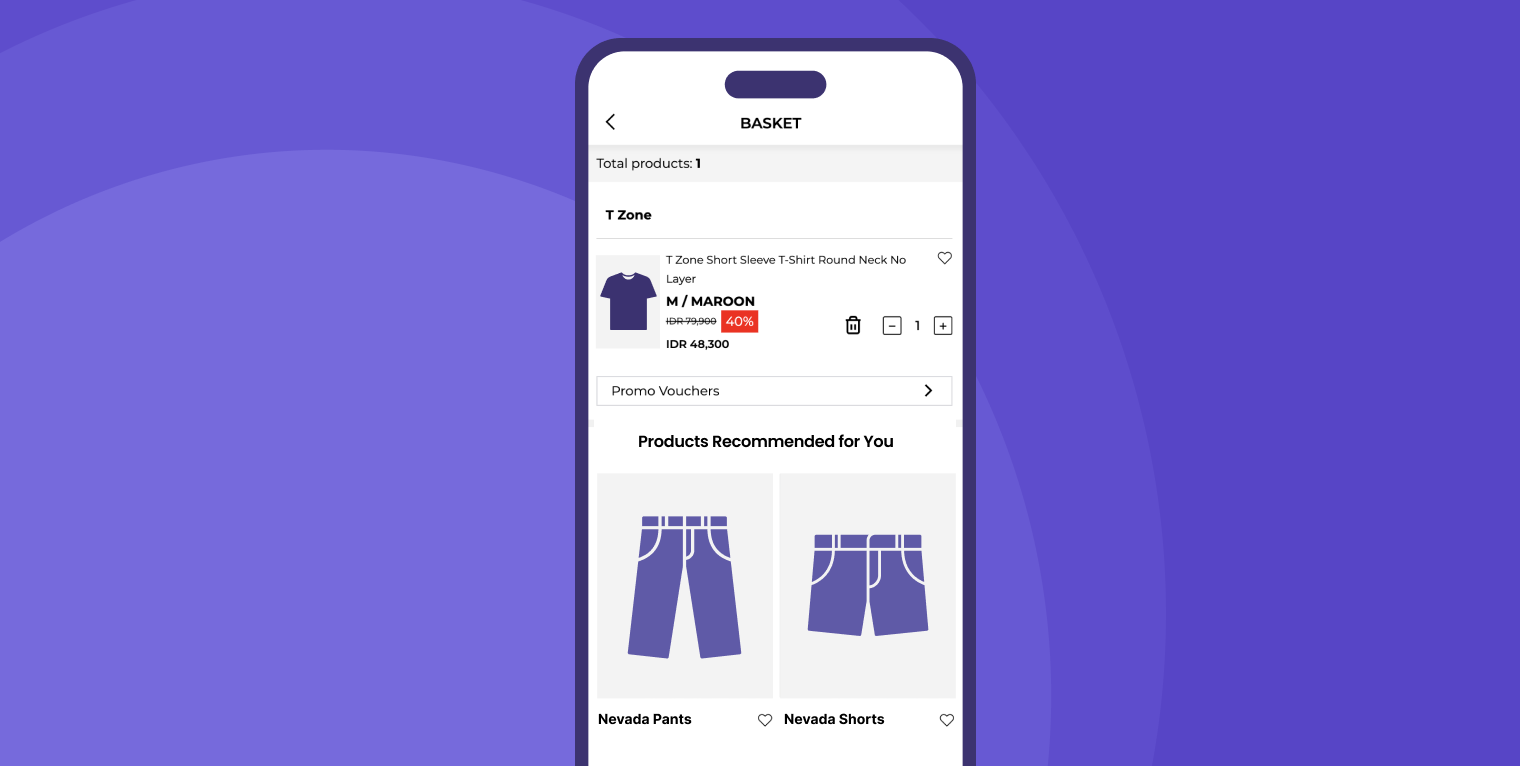
There are several reasons why we recommend using purchase-based recommendations in your omnichannel engagement strategy:
1. Contextual to intent
When you know your customer’s purchase history, you know more about their intent. For example, if a customer has bought a formal outfit, you know their intent of shopping — formal attire in this case. So you have a precise idea of what to recommend to them that matches their intent.
A purchase intent might be different from the interest that a shopper shows when browsing. For example, the shopper might have browsed casual wear, beach wear, and holiday outfits but have settled on buying formal clothes.
Purchased-based recommendations are more contextual to the intent than the interest of the shoppers because purchase shows higher intent vs. the interest shown when browsing.
2. Increase repeat sales
Once a transaction happens, you need to re-engage with the customers to improve the chance of repeat sales.
If you have the purchase data of the customer, you may recommend and prompt with related products through in-app push notifications, WhatsApp messages, or emails.
3. Improve your CLTV
CLTV, or customer lifetime value, is a business metric that measures how much revenue a business can earn from the customer throughout the relationship with the customer.

When the recommendations are made based on the purchase intent of a customer, there are higher chances of converting them into a repeat buyer, which improves the CLTV.
4. Enables hyper-personalization of messages
A personalized message is always good. But why settle for simple personalization like referring to the customer by their “first name” when you can do so much more with purchased-based recommendations?
Using this strategy, Clovia, India’s fastest-growing lingerie brand, saw a whopping 85% uplift in their revenue.
Clovia leverages WebEngage’s funnel feature to understand customer behavior across various channels to analyze drop-offs. They also created a checkout funnel to understand the drop-off of high-intent customers.
Based on these findings, Clovia ran a hyper-personalized multi-channel engagement journey using WebEngage’s Journey Designer to encourage potential customers to complete their purchases.
5. Better upsell and cross-sell opportunities
Say you purchased a pair of denims from the Shoppers Stop app. The next day, you receive a nudge from the brand offering recommendations of tops and tees to pair up with your denim or recommendations for similar denim at a higher price range. Sounds familiar?
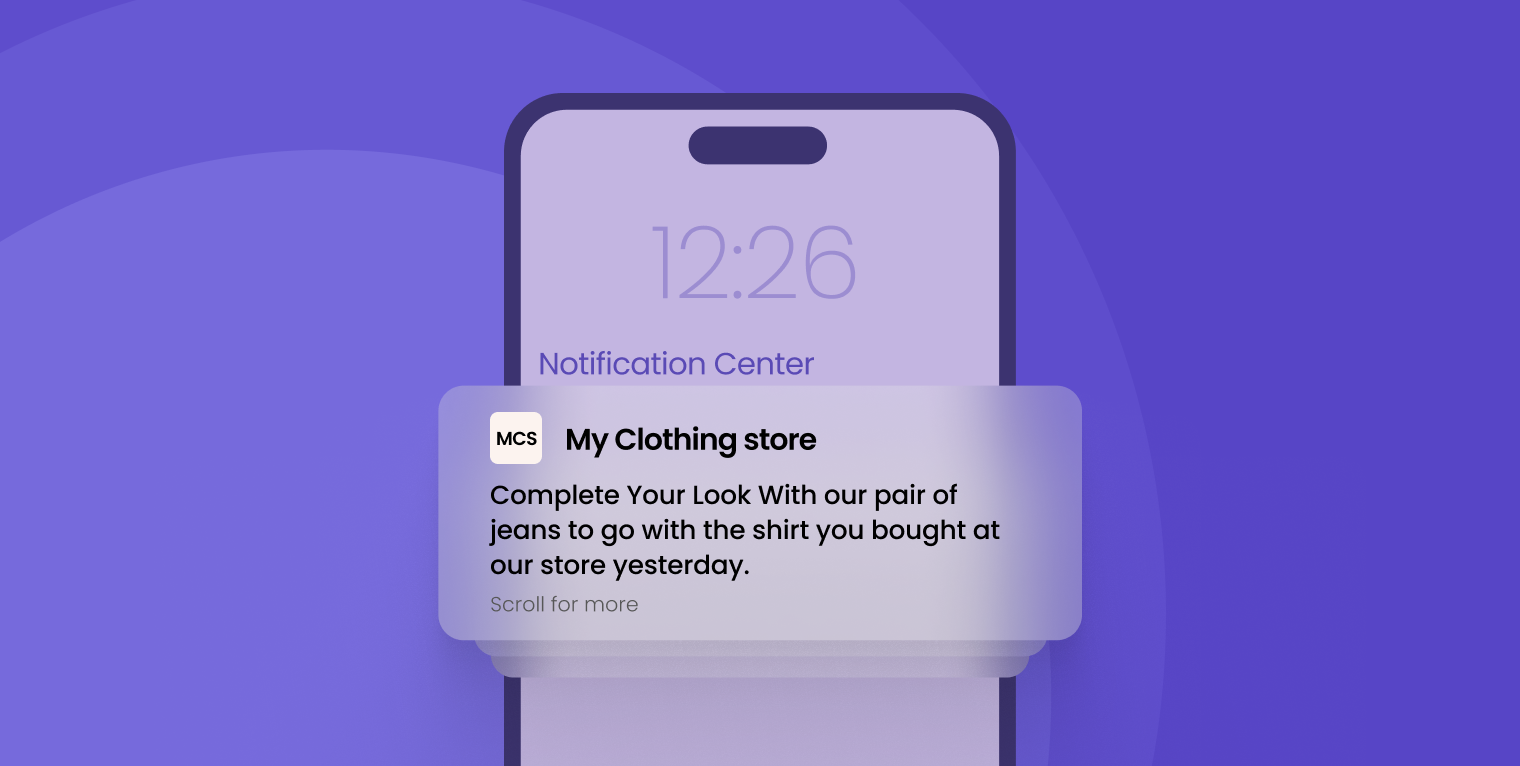
Consumers expect brands to remember their prior purchase behavior and spend almost 40% more than planned when they receive hyper-personalized messages.
Knowing prior purchase history and sending product recommendations based on this data can help brands land better upsell and cross-sell opportunities.
6. Boosts AOV
Product recommendation based on past purchases improves upsell and cross-sell opportunities. And when you’re able to cross-sell and upsell to your existing customers, you can improve your average order value (AOV). Here’s how AOV is calculated.

Using this strategy, EGO, the fastest-growing fashion brand from Pakistan, was able to boost its average order value by over 12%.
After analyzing the shopper’s previous purchases on the EGO platform, the team identified their most purchased products. Based on the findings, the team with WebEngage Journey Designer started cross-selling relevant products in a timely manner, increasing their AOV.
What are the types of post-purchase product recommendations you can send?
Here are some examples of different types of post-purchase product recommendations for you to consider.
1. Mode of purchase
For instance, you can send post-purchase recommendations based on their mode of purchase — online or offline. Say the customer bought an apparel through your website. You can send post-purchase recommendations by email and WhatsApp based on the data collected during checkout.
2. Products purchased
Say a customer has purchased a bottomwear. Your post-purchase recommendation can be similar bottom wear at a discounted price or a matching ‘kurta’ or ‘kameez’ to pair with the bottom wear.
3. Product value
Knowing the customer’s previous cart value can hint at their spending power. For example, if a customer previously had a high cart value, it indicates they have decent spending power, and you can recommend them products accordingly.
4. Repeat customer
If a customer is purchasing from you for the second time, it means that the customer has already used your product and trusts you. These users are great prospects to cross-sell/upsell because they’re already familiar with and like the brand.
So, you have a better chance of conversion while up-selling or cross-selling. Look at the CSAT score to determine your satisfied customers and target them with personalized recommendations.
5. Discounts availed
Based on the discounts the customers have availed in their previous purchases, you can cross-sell items available on similar discounts and deals.
6. Based on brand loyalty
Pamper your high-value customers with some special ‘brownies’ in the form of early bird offers, exclusive deals, member-only discounts, etc. When you reward your loyal customers, they feel special and valued. This also subtly encourages them to repeat purchases. Spice it up with relevant product recommendations to shorten their buyer journey.
But how do you make your product recommendations this accurate? This is where a CDP comes into play.
Using CDP for effective post-purchase recommendations
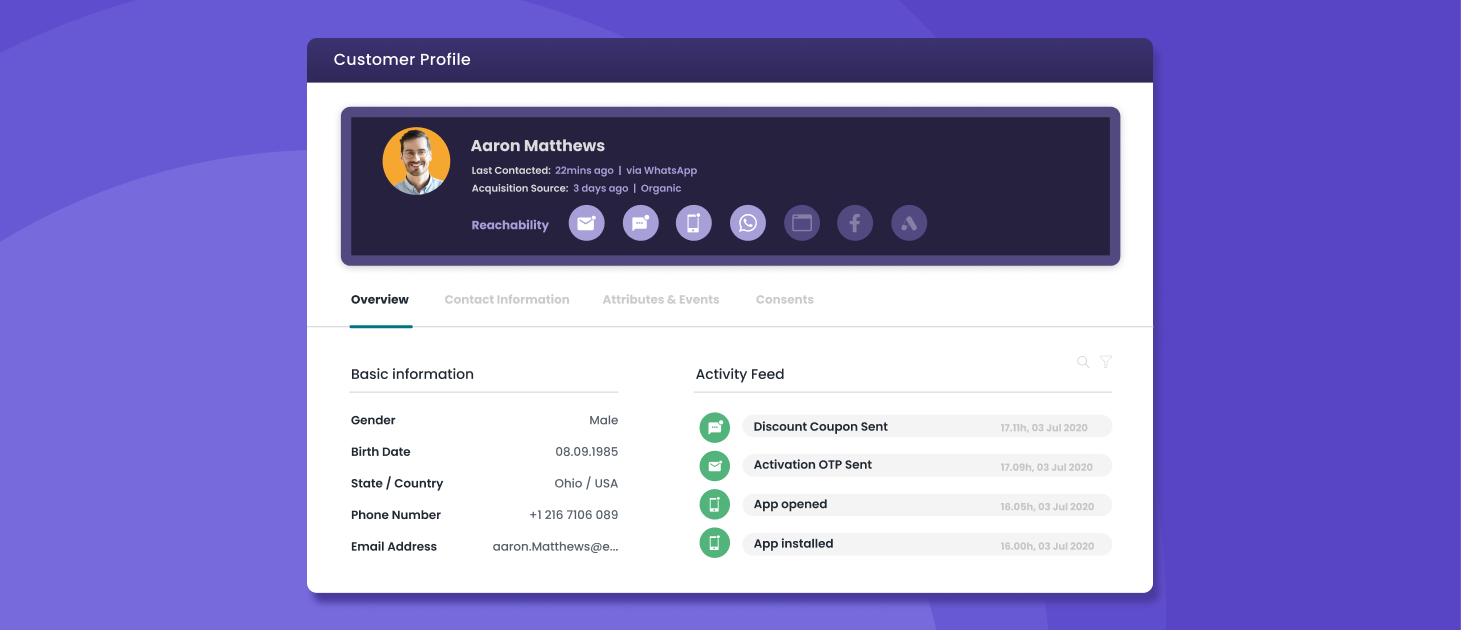
A CDP or a customer data platform is a packaged software that collects customer data from various channels and offers a holistic view of the customer. As there is a dissipation of the third-party cookies along with data influx in our system, brands are leaning on first-party data to gather insights on the customers.
However, the problem arises as there is no way to collect and unify data and orchestrate them for marketing campaigns.
CDP helps brands to collect customer-specific data by integrating multiple channels. This helps in getting a complete 360-degree view of the customer. Once the data is integrated from all the channels, it’s then segregated and segmented for specific marketing campaigns.
Let’s say a shopper has purchased a coord set from the physical store. The same person later buys a watch from the store’s digital app.
The customer has a different journey on multiple channels with multiple intents across the touchpoints.
Sending this customer recommendation based on one touch point can make them irrelevant or complete.
WebEngage’s CDP, for example, ensures that all the customer data is aggregated from various channels for its recommendation engine to send personalized product recommendations.
Going back to our previous example, after the offline purchase, the customer may receive recommendations tailored to clothing via the WhatsApp number that they provided during the store shopping.
Following the in-app purchase, the same customer can get personalized recommendations delivered through push notifications, email, or other channels specifically centered around the item they purchased through the app, the watch in this case.
This omnichannel approach ensures that recommendations align with customer preferences at all stages of the buying journey.
Additionally, the best channel and intelligent sending feature of WebEngage helps marketers make targeting more precise and effective. With WebEngage on your side, you can’t get wrong with precise targeting and sending product recommendations that are apt and timely.
Conclusion
Today, the customer’s journey is not linear, and they have different intent at different touchpoints.
Product recommendations need to adapt and evolve to address the different intents and interests of the customers across various channels where they’re most active.
Journey Designer of WebEngage ties it all together to automate campaigns using an easy-to-use campaign management platform like WebEngage.































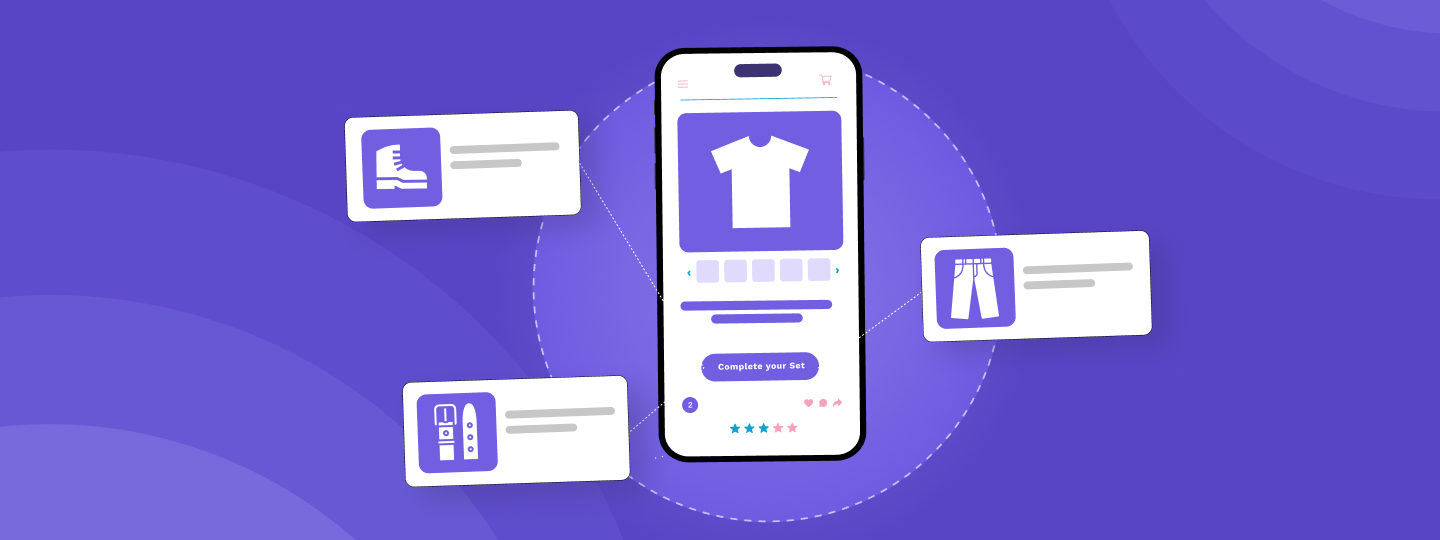


 Diksha Dwivedi
Diksha Dwivedi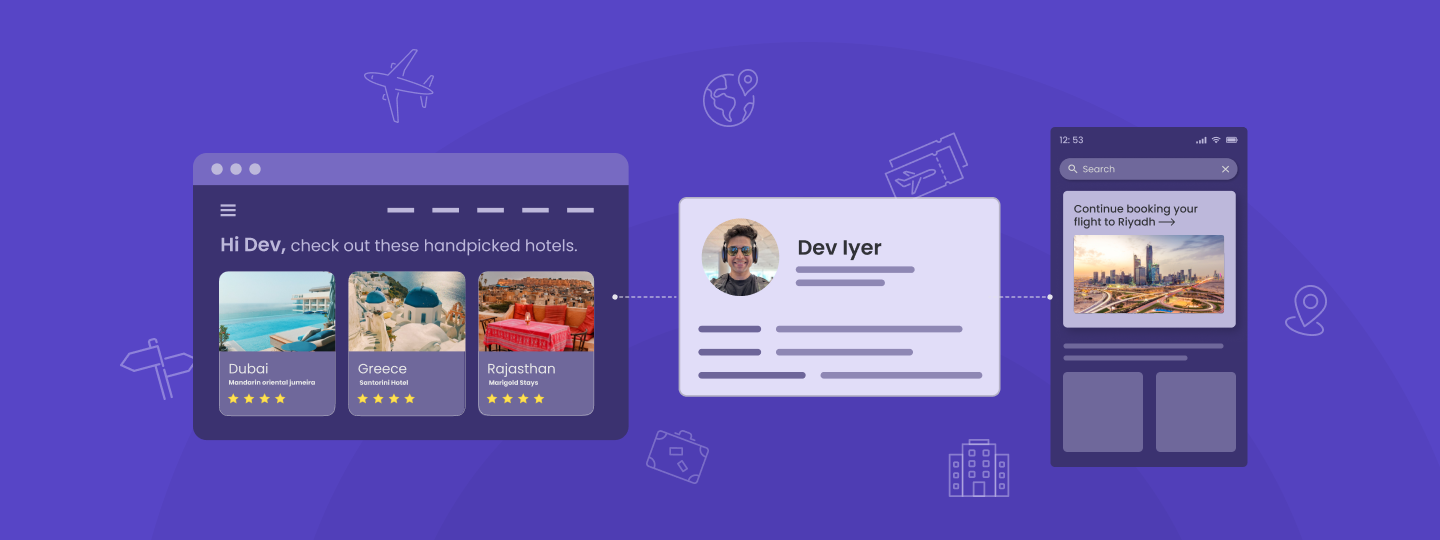
 Dev Iyer
Dev Iyer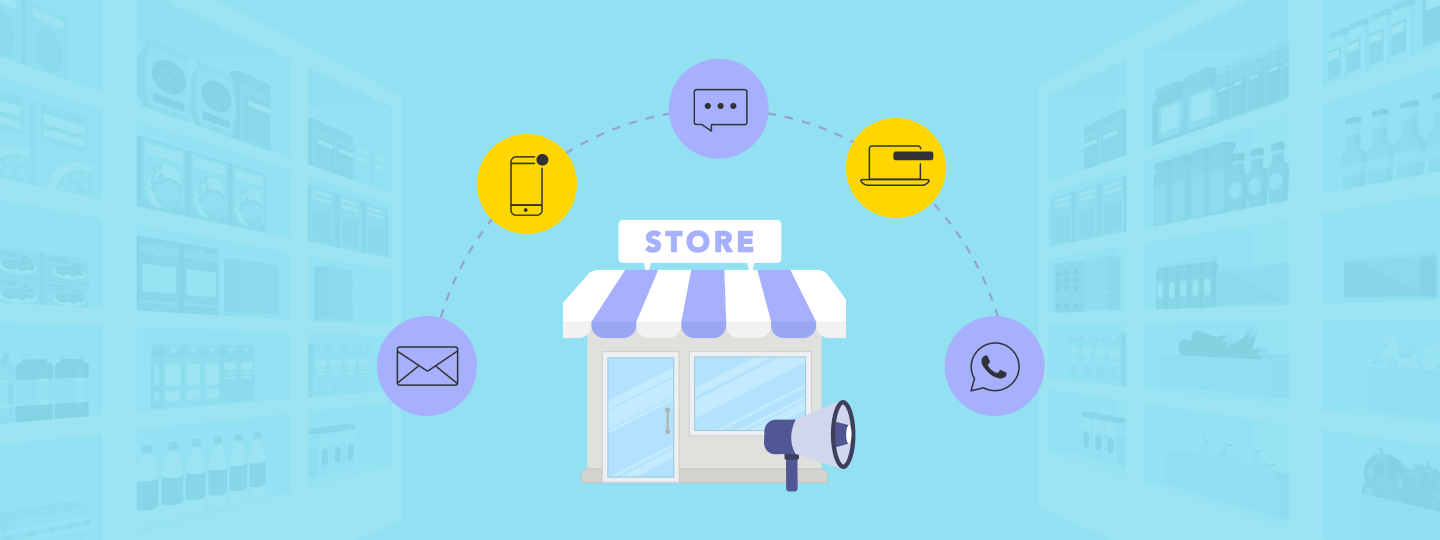
 Prakhya Nair
Prakhya Nair